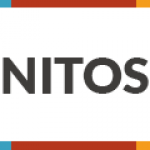What is LOG-a-TEC (JSI)?
The LOG-a-TEC cognitive radio testbed is focused on spectrum sensing in TV whitespaces and cognitive radio applications in wireless sensor networks. A license from the local regulator allows for low-powered transmissions in TV whitespaces as well as frequency bands for unlicensed devices.
The testbed consists of several clusters of wireless sensor nodes. Approximately 70 sensor nodes are mounted in different outdoor environments and are connected through a wireless management network. Each node has multiple reconfigurable radios that can be used in various modes. Radios support different sub-1 GHz bands as well as the 2.4 GHz ISM band.
Possible experiments include for instance testing different strategies for distributed spectrum sensing and evaluation of the performance of various communication protocols targeting outdoor wireless sensor networks in realistic environments.
Architecture
VESNA sensor nodes contain an ARM Cortex M3 CPU with 64 MHz clock, 512 kB Flash ROM, 64 kB RAM and a 2 GB SD card for code and data storage. Some nodes are accessible directly over an IP network while others use a non-IP based proprietary protocol based on ZigBee. ZigBee based nodes can be accessed from the IP network through a Java application running on an internal server that provides a protocol translation.
Each node has 3 hardware slots that can contain up to 3 radio modules: (a) a reconfigurable transceiver or receiver (see below), (b) Atmel AT86RF212 or AT86RF231, an IEEE 802.15.4 compatible transceiver and (c) an 868 MHz ZigBee radio.
Slot (a) can contain one of: (a1) a Texas Instruments CC1101-based sub-1 GHz reconfigurable transceiver, (a2) a Texas Instruments CC2500-based 2.4 GHz reconfigurable transceiver or (a3) a custom-designed spectrum sensing receiver for the UHF broadcast band.
On ZigBee-based nodes radios (a) and (b) can be used for experimentation. On 6LoWPAN nodes, (a) can be used for experimentation while (b) is used for management.
Sensor nodes are controlled through an HTTP-based protocol from a Linux virtual machine. A Python library is available that provides a simple high-level interface for experiment control.
Experimentation
Based on the requirements for the experiment (types of radios required, desired environment and node geometry, etc.) experimenter must choose a testbed cluster and a subset of sensor nodes in that cluster that will participate in the experiment.
The experimenter must then provide a program that configures the sensor nodes, controls the experiment and saves the desired measurements. The program communicates with the sensor nodes through a REST API. If IP-accessible sensor nodes are used, the program communicates directly with the sensor nodes over the IP network. If ZigBee-based nodes are used, the program communicates with the nodes over a Java-based application that acts as a gateway.
The program is typically written in Python language because a Python module (https://github.com/sensorlab/vesna-alh-tools) is provided that provides simple, high-level functions to control the sensor nodes. Vesna-alh-tools provide an abstraction over the protocol gateway and also offer some debugging tools that can be used during the development.
During the course of the experiment, the experimenter’s program runs on Linux virtual machine that has access to the sensor node IP network and the ZigBee gateway. The virtual machine is set up using the jFed Experimenter GUI (http://jfed.iminds.be).
Experiment examples
- Using a geolocation database in combination with dynamic sensing data for avoiding interference with incumbent users in TV white spaces. The CREW-TV experiment used a network of 8 sensor nodes with energy detection receivers in a distributed fashion.
- Evaluating a game-theoretic approach to interference mitigation in wireless networks. Two existing power allocation strategies that use a game theoretical framework have been developed, adapted and evaluated on LOG-a-TEC.
- Evaluating over-the-air reprogramming strategies. Different strategies for OS, driver and application updates in constrained Internet of Things-type devices have been compared based on expected frequency of updates and file size
Contact
Jožef Stefan Institute
Department of Communication Systems
Jamova cesta 39
1000 Ljubljana
Slovenia
Contact for the testbed is log-a-tec@ijs.si
More details can be found at: http://log-a-tec.eu/overview.html






